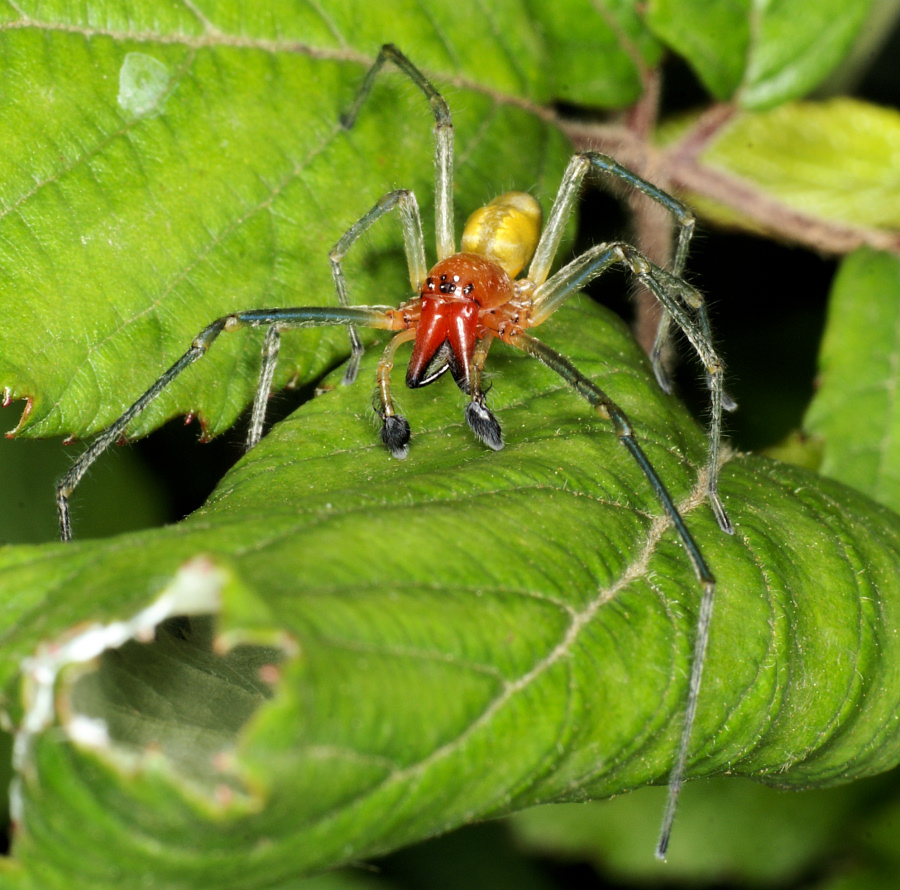
This family is new for Europe after Ramírez, Bonaldo and Brescovit transferred the genus Cheiranticum from the family Clubionidae to this family in 1997.
Thirty genera with 400 species were described world-wide in 2010. In Europe only the Cheiracanthium is represented.
The Miturgidae spiders are nocturnal, they live on the ground and are cryptic what means;
tending to conceal or camouflage.
Most spiders of this family hide and guard their eggs in a sac-like retreat under rock or other debris.
 |
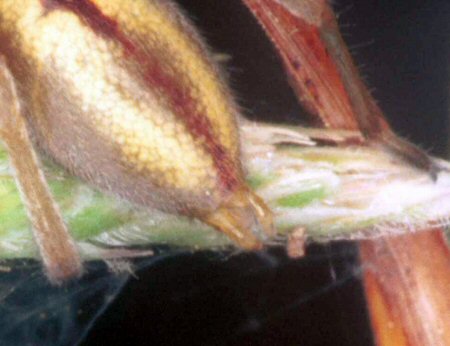 |
| Eye pattern frontal view | Four spinners, two spinner with two segment the other two spinner conical |
Genus Cheiracanthium or yellow-sac spiders
Eight species of the nearly 200 Cheiracanthium species can be found in NW-Europe. The spiders are usually found in a silken retreat on vegetation but also under stones during daytime.
They are easily distinguished from the species Clubiona because the first pair of legs is much longer than the other six legs.
The name of this genus is sometimes, wrongly, written as
Chiracanthium.
Spider from this genus have been implicated in human envenomations but recent studies showed that the bite is of no medical importance.
As one can see on the pictures, the fangs are stout enough to penetrate the human skin. The bite may hurt for an hour.
The spider lives on low vegetation and often makes their retreat in the seeds of grasses in which they hide during daytime. The eggs are coloured pink.
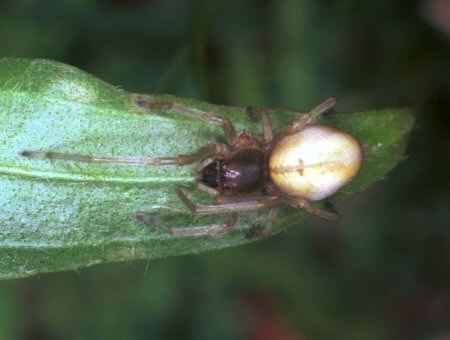 |
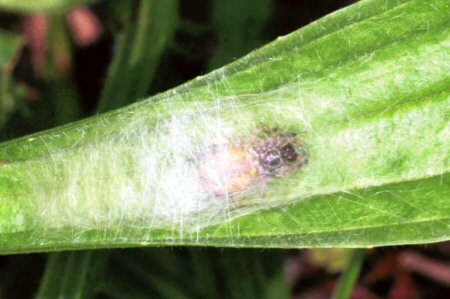 |
| Cheiracanthium erraticum female. Note the long first legs | Cheiracanthium erraticum female in retreat |
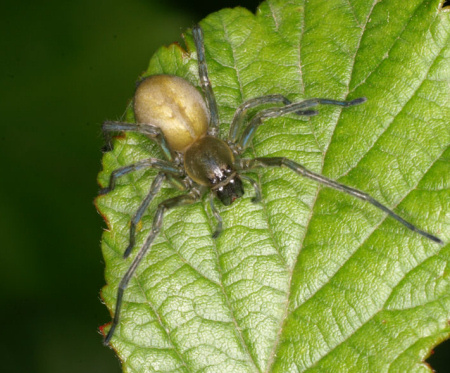 |
 |
| Cheiracanthium erraticum female | Cheiracanthium erraticum male leaving his retreat |
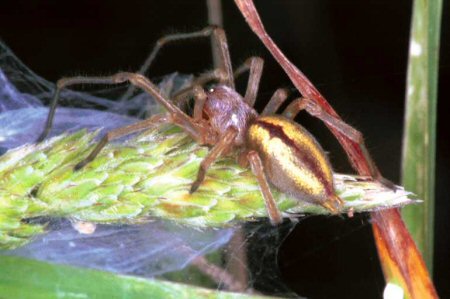 |
 |
| Cheiracanthium erraticum male | Cheiracanthium erraticum male |
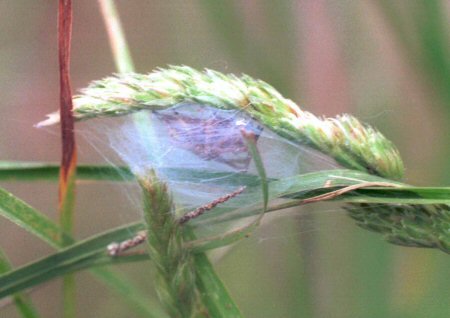 |
 |
| Cheiracanthium erraticum in hiding place | Cheiracanthium ZZ157 (punctorium?) male |
Ed Nieuwenhuys, July 20, 2010
August 2, 2008,
10 December 2006